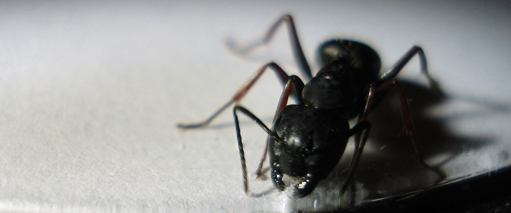We have talked about termites a lot in previous columns. They are swarming now, so if you see anything suspicious, call a good company for an inspection. You can call me if you like and I will inspect your home for you. In this column we will talk about some other insects that can do structural damage to your home.False powder post beetles (Anobiidae & Bostrichidae)There are a number of species of beetles in this family that attack wood. They will attack new and old hardwoods and softwoods, with a 12% moisture content. They are recognized by their hood-like thorax that hides the head when viewed from above. They have a cylindrical body shape and are reddish-brown to brownish-black in color. They are often found infesting wood joists and sill plates in crawl spaces under homes. Two common species are the deathwatch beetle (Xestobium rufovillosum) and the furniture beetle (Anobium punctatum). The furniture beetle will infest furniture and pine flooring. The lead cable borer (Scobicia declivis) normally infests dead and seasoning oak and damage can be severe. It is found throughout the west and is most common in California. Recently it has been found in Albuquerque. The best method of control for all wood-boring beetles is to treat all exposed wood with a sodium borate, which will prevent them from reinfesting the wood after they emerge.Powder post beetles (Bostrichidae; Lyctinae – Lyctus spp.)Powder post beetles are small, elongate and almost always infest hardwoods. They frequently infest lumber, woodwork, furniture, tool handles, gun stocks and similar items. They produce very fine, powder-like frass when they damage wood. Frass from anobiids and bostrichids is not nearly as fine as these beetles produce. They are second only to termites in destructive capability. There are several destructive species nationwide. The brown powder-post beetle (Lyctus brunneus) found in most states and is frequently found infesting imported hardwood products. The western powder-post beetle (Lyctus cavicollis) is found throughout the the United States and attacks oak firewood and hickory, orange and eucayptus wood. The southern powder-post beetle (Lyctus planicollis) is found nationwide but does most of its damage in the southern states. It prefers seasoned or partially seasoned wood of oak, ash and hickory. The white-marked powder-post beetle (Trogoxylon parallelopipedum) is a common native species and has the same food preferences the southern powder-post beetle.Long-horned borers (Cerambycidae)Only a few species of long-horned beetles are pests of wood in homes. In New Mexico, the black-horned pine borer (Callidium antennatum) is found throughout the state. These beetles are about a half inch long, flattened and bluish-black in color. They have long antennae. They usually show up in vigas that are installed in homes. Other species of long-horned borers that emerge from vigas in homes will generally not reinfest the wood. The black-horned pine borer will. The vigas need to be treated with a sodium borate to prevent further infestations.Metallic wood borers (Buprestidae)The larval form of these beetles are called flat-headed borers, because the exit holes in the wood are oval, not round as in most other wood boring beetle larvae. Only a few species will attack seasoned wood, so they aren’t a serious pests. The adult beetles are often brightly colored and metallic. They are boat shaped in appearance.If you are a realtor, make sure your inspector is familiar with these beetles as well as termites when you get a WDO inspection.Carpenter Ants (Camponotus spp.)Another wood destroying insect is the carpenter ants (Camponotus spp.). Carpenter ants are a major wood destroying insects in other parts of the country, particularly the northwest. They have more humidity there and the ants require moist wood to bore into. In the 35 years I have been in NM, I have seen only a couple of cases where these ants did significant damage and in each case, there was a moisture problem in the home. We have 20 species of carpenter ants in New Mexico. Only a couple will get into homes looking for food (not wood). In our area, the red and black species, Camponotus vicinus, is the most common. If you find any carpenter ants, call a local pest company. Any competent company can easily identify any of the 20 species and give you information on them. If you can’t find a company to ID them, I can do it for you. I have a lot of experience in myrmecology (study of ants) and am also a dipterist (study of flies) in the Entomological Society of America Database.
If you have any pest questions, you can contact The Bugman at askthebugman2013@gmail.com or call him at (505) 385-2820. You can also go to his webpage at www.bugmansbugclub.com and join the Bug Club. You will get a lot of information on ants and all other household pests.






